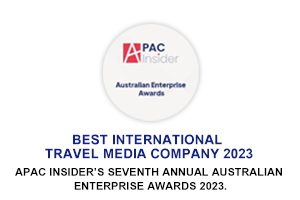RMIT experts available for comment onthe 50th anniversary of the moon landing Experts from RMIT University are available to talk to media about the moon landing and a range of space-related topics.
Dr Graham Dorrington (0447 003 607 or graham.dorrington@rmit.edu.au)
Topics: space exploration, benefits of space technology for Australia, space launch “NASA’s planned ‘Dragonfly’ robotic drone mission to Saturn’s largest moon Titan is one of the most ambitious and exciting space exploration projects to be announced in recent years.
“Like Earth, Titan is thought to have rain, rivers, lakes and dunes, but its cloudy-obscuring atmosphere is about -180 degrees centigrade, so cold that liquid methane replaces water.
“Fortunately, it is possible to fly around Titan with much less power than on Earth as its gravity is one-seventh of ours and its atmosphere is five times denser.
“It may also be possible for Australia to actively participate in exploring this amazing new world, provided national agreements can be reached.
“As well as deep space exploration, Australia’s recently-announced space agency offers the possibility to engage in many new space projects that could be of direct pragmatic benefit to Australians.
“For example, placing a constellation of small satellites carrying thermal sensors in low Earth orbit would provide early warning about bushfires.
“This could help firefighting agencies make better-informed decisions as well as helping people living in the urban-bush fringe zones to decide when to safely evacuate their homes when necessary.
“Space launch is a difficult and competitive global market, but with clever new thinking, Australia could also offer unique capabilities to permit market access.”
Dr Graham Dorrington is a senior lecturer in Aerospace Engineering and Aviation at RMIT. He obtained his PhD focused on the theme of space transportation from Cambridge University, UK. He is an alumnus of the International Space University, has held a research fellowship at the European Space Agency (ESTEC) and previously worked at British Aerospace Space and Comms division. He has published several journal and space conference papers on astronautical engineering concepts.
Dr Brett Carter (0410 418 109 or brett.carter@rmit.edu.au)
Topics: space weather, space environment effects on satellites, solar storms, geomagnetic storms, space situational awareness/satellite tracking “Space weather impacts both humans and materials in space in ways that are still not fully understood, despite decades of exploration.
“The Apollo missions sent astronauts through the harmful Van Allen radiation belts and outside the relative safety of the Earth’s magnetic field, without us knowing what impact this could have on them or their spacecraft. However, all the Apollo missions were quite lucky because they all missed the strong solar storms that occurred during those years.
“These days, the level of space weather activity is an important consideration before most launches into space.
“While lots of robotic missions have explored various parts of the solar system, and human missions much closer to Earth, we still don’t understand the space environment enough to reliably predict it more than three days ahead of time. This lack of understanding is going to increase the risks to future human lunar missions and missions to Mars.
“Space research has benefited greatly from NASA’s Apollo missions in many ways, but perhaps the most important was the inspiration that they gave to young aspiring space scientists at the time who then paved the way for the rest of us, allowing wider society to have access to space-based technologies on a routine basis.”
Dr Brett Carter is a space physicist at RMIT who specialises in understanding how the space environment impacts human technologies. The primary focus of his research is the challenge of predicting the dynamic space environment and how it’s going to influence various technological systems. He is currently the Chair of the Solar-Terrestrial and Space Physics Group within the Australian Institute of Physics.
Dr Gail Iles (0431 342 026 or gail.iles@rmit.edu.au)
Topics: Human spaceflight, space exploration, radiation in space, Artemis moon missions, rockets,physics
“Australia has a space agency, but we need to carve out a niche in space industries.
“Australia should focus on microgravity research rockets, which makes use of that freefall condition you may feel on an amusement park ride or in a fast-moving elevator when your stomach lifts up to conduct scientific experiments.
“Some experiments are underway already locally. Microgravity experiments reveal extra information about processes allowing us to speed up development of technology.
“We can’t talk about the future of space industries without talking about the people.
“In just five years – 2024 – we’ll see the first woman set foot on the moon, which will no doubt inspire girls across the world to become astronauts.
“It would be far more efficient to have female astronauts – they need less calories per day and less food than men, reducing total mass of cargo needing to be launched into space.”
A nuclear physicist, Dr Gail Iles is the program coordinator for the newBachelor of Space Scienceat RMIT. Iles is an expert in human spaceflight having trained astronauts and flight controllers at the European Space Agency. She has also completed five parabolic flight campaigns that saw her spend more than two hours experimenting in microgravity. Iles is the Chair of the Victorian branch of the Australian Institute of Physics and is regularly featured in the media promoting STEM.
Associate Professor Suelynn Choy (0422 883 900 or suelynn.choy@rmit.edu.au)
Topics: geospatial science, GPS, global navigation satellite systems “While space often conjures up images of rockets and astronauts, there are plenty of downstream applications of satellite technology in our daily lives.
“For example, many people use Google maps every day but few people know it uses GPS satellites in space.
“While GPS is usually good enough for everyday purposes, it is not sufficiently accurate for many other applications such as autonomous cars, where an error of five metres means the difference between staying in a lane or colliding with traffic.
“The Australian Government committed $224 million in 2018 towards developing a satellite positioning capability, bringing positioning accuracy to a centimetre level in Australia. This means that people in the building and construction industry, farmers operating robotic tractors and emergency services will have free and open access to global positioning technology to centimetre rather metre level.”
Associate Professor Suelynn Choy is Director of the Satellite Positioning for Atmosphere, Climate and Environment Research Centre at RMIT. She is an expert in satellite navigation and positioning.
She has authored numerous research publications, contributed to industry collaborations in this area, and has advised national and international committees on satellite navigation and positioning.
Professor Cees Bil (0423 200 498 or cees.bil@rmit.edu.au)
Topics: Apollo 11 moon landing, space flight, space exploration, spacecraft and launch vehicles “The mission to the moon started with US President John F. Kennedy’s famous speech to congress in 1961 committing the nation to a moon landing within the decade. It culminated in the Apollo 11 moon landing on 20 July 1969 and five more successful moon landings would follow until 1972.
“Following the Apollo program, attention moved to manned Earth orbit missions with the development of a reusable space shuttle and the International Space Station, with solar system exploration delegated to robotic spacecraft and surface rovers.
“More recently, commercial companies, such as Blue Origin and Virgin Galactic, are making the space experience more accessible to the public by offering flights to the edge of space. Another paradigm shift is the provision of launch services by commercial companies, such as SpaceX and the United Launch Alliance.
“A new trend in the realm of small to very small satellites are CubeSats, which are research satellites of 10 cm x 10 cm x 11.35cm units with a mass of up to 1.33kg each. Because of their small size and low cost, many universities are involved in the design and operation of CubeSats.
“The US will eventually return to manned space flight with the Orion spacecraft that can carry up to six astronauts. Incidentally, the Orion spacecraft is essentially a larger version of the former Apollo command module.”
Professor Cees Bil is an aerospace engineer and an aerospace system design expert at RMIT University. His field of research is transdisciplinary design of complex systems, aerospace vehicle design optimisation and operations.















